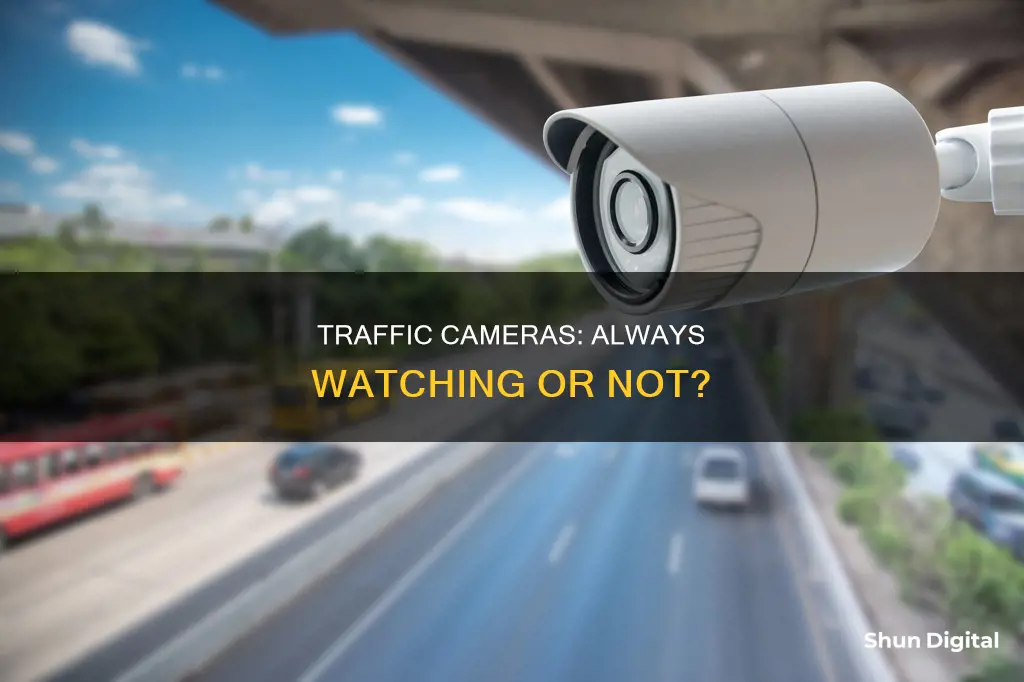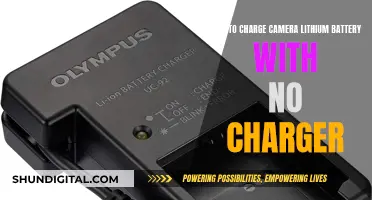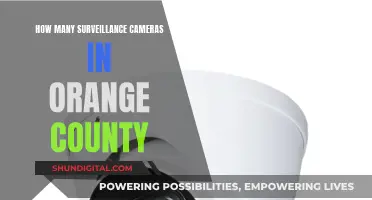
Traffic cameras are a common sight in cities across the United States, and their presence is often a source of debate among drivers. These cameras serve various purposes, from monitoring traffic patterns and improving road safety to issuing tickets and violations. While some people argue that traffic cameras invade their privacy, others recognize their role in reducing accidents and saving lives. So, are these traffic cameras always on and recording our every move?
| Characteristics | Values |
|---|---|
| Purpose | Monitoring traffic patterns, ensuring road safety, tracking the whereabouts of drivers, and issuing tickets and violations |
| Location | Intersections, highways, roads, street lights, and traffic lights |
| Type | Fixed, mobile, automated traffic enforcement cameras (ATECs), red light cameras, speed cameras, traffic sensor cameras, and automated number plate recognition (ANPR) cameras |
| Functionality | Continuous monitoring, accident recording, traffic flow measurement, and traffic light timing determination |
| Data Storage | Stored for a few days to several months, depending on the jurisdiction and purpose |
| Power Source | Mains electricity, solar panels, or other sources that don't have power outages |
What You'll Learn
- Traffic cameras are usually placed on major roads like highways, freeways, and arterial roads
- They are powered by mains electricity, solar panels, or other sources that don't have power outages
- They are connected by optical fibres buried next to or under the road
- They are not the same as road safety cameras, which take high-resolution photos when triggered
- They are used to monitor traffic, while red light cameras are used to detect and ticket vehicles that run red lights

Traffic cameras are usually placed on major roads like highways, freeways, and arterial roads
Traffic cameras are often placed on major roads, including highways, freeways, and arterial roads. These cameras are typically connected by optical fibres buried alongside or beneath the road. In urban areas, they can be powered by mains electricity, solar panels, or other power sources that are not susceptible to outages.
Traffic cameras are distinct from road safety cameras, which are installed in specific locations to enforce compliance with traffic rules. These cameras capture high-resolution still images when triggered, and they may be positioned to monitor traffic signals, intersections, school zones, and pedestrian crossings.
Traffic cameras are primarily used for monitoring traffic conditions and are not tied to any enforcement system. They capture low-resolution videos, often in full motion, and can be remotely controlled to focus on incidents outside their usual field of view. The footage from these cameras is typically not archived or used for incident investigation, but rather for monitoring traffic flow and travel times.
Automated Number Plate Recognition (ANPR) Cameras are another type of camera used for tracking driver whereabouts. These cameras use artificial intelligence to read license plate numbers and can be either mobile (mounted on police vehicles) or fixed (mounted on poles). While not tied to an automated ticketing system, the information gathered by these cameras can be used to notify police officers of outstanding warrants or other relevant information.
Annke Cameras: Where Are They Manufactured?
You may want to see also

They are powered by mains electricity, solar panels, or other sources that don't have power outages
Traffic cameras, also known as traffic sensor cameras or traffic monitoring cameras, are typically placed on major roads like highways, freeways, expressways, and arterial roads. They are distinct from road safety cameras or speed cameras, which are installed in specific locations to enforce compliance with speed limits or other road rules. Traffic cameras are generally used to monitor traffic conditions and are not tied to any law enforcement system.
Traffic cameras are usually connected to each other through optical fibres buried alongside or beneath the road. In terms of power sources, these cameras can be quite versatile. In urban areas, traffic cameras are often powered by mains electricity. However, they can also be powered by solar panels or other alternative sources that are less susceptible to power outages. This ensures that the cameras can operate continuously and reliably without being affected by disruptions in the electricity supply.
The use of solar panels or alternative power sources is particularly relevant for maintaining uninterrupted operation in areas where mains electricity may be unreliable or inaccessible. This flexibility in power sources contributes to the overall effectiveness and reliability of traffic cameras as a tool for monitoring traffic conditions and managing road networks.
Unlocking Kik Camera: Modding for Creative Freedom
You may want to see also

They are connected by optical fibres buried next to or under the road
Traffic cameras are video cameras that observe traffic on roads. They are typically placed on major roads such as highways, freeways, expressways, and arterial roads. These cameras are distinct from road safety cameras, which are installed to enforce rules by taking high-resolution photos when triggered. Traffic cameras, on the other hand, are used only for observation and to provide a continuous feed of lower-resolution videos. They are often mounted on high poles or masts, or on traffic light poles at intersections.
Traffic cameras are usually connected by optical fibres buried alongside or under the road. This infrastructure allows for a consistent feed without the threat of power outages. In urban areas, electricity is provided by mains power, while in remote locations beyond the electrical grid, renewable sources like solar power are utilised. This setup also provides backup power to urban camera networks.
The optical fibres connecting traffic cameras enable the transmission of real-time video to a monitoring centre. This centre acts as a dispatcher in the event of a collision, incident, or safety issue. The cameras are an integral part of intelligent transportation systems, especially in tunnels, where they facilitate remote activation of safety equipment.
The use of optical fibres for data transmission ensures a reliable and uninterrupted connection between traffic cameras and monitoring centres. This technology enhances the efficiency of traffic management systems and contributes to overall road safety.
Computer Monitors: Cameras Watching or Just a Myth?
You may want to see also

They are not the same as road safety cameras, which take high-resolution photos when triggered
Traffic cameras are distinct from road safety cameras. Traffic cameras, also known as traffic sensor cameras or traffic monitoring cameras, are typically installed on highways, freeways, expressways, and arterial roads. They capture low-resolution videos continuously and can be remotely adjusted to focus on incidents outside their standard field of view. These cameras are not part of law enforcement and are primarily used for monitoring traffic flow and travel times, or for traffic studies.
On the other hand, road safety cameras are set up at specific locations to enforce adherence to traffic rules. They capture high-resolution still photos when triggered. These cameras can be fixed or mobile. Fixed cameras are usually placed at busy intersections or on poles above roadways, while mobile cameras can be installed in unmarked vehicles or mounted on a tripod outside a vehicle.
Mobile road safety cameras use radar technology to determine the speed and direction of vehicles. When a vehicle is speeding, it triggers the camera, which then captures an image of the speed detection along with a Target Vehicle Marker to identify the offending vehicle.
Road safety cameras can also be equipped with AI technology to detect and capture images of specific offences, such as drivers using mobile phones or not wearing seatbelts. These cameras are strategically placed in high-priority locations with a high crash risk and speed-related issues.
In summary, while traffic cameras are used for general traffic monitoring and observation, road safety cameras are specifically designed to enforce traffic rules and capture high-resolution images when triggered by violations.
Exploring Adobe Camera Raw: Mastering the Undo Functionality
You may want to see also

They are used to monitor traffic, while red light cameras are used to detect and ticket vehicles that run red lights
Traffic cameras are used to monitor traffic flow and road conditions, while red light cameras are used to detect and issue tickets to vehicles that run red lights.
Traffic monitoring cameras are typically placed at strategic locations, such as complex intersections, congested roads, or areas with extreme weather conditions. These cameras are often mounted on poles, bridges, or other structures, providing a comprehensive view of the traffic flow and conditions. The images captured by these cameras are transmitted to a control centre or network, where they can be viewed in real time by traffic engineers or law enforcement personnel. This allows them to monitor traffic flow, detect accidents or disruptions, and take appropriate action to improve traffic safety and alleviate congestion. Some traffic monitoring cameras are equipped with sensors that can detect vehicle speeds, enabling authorities to enforce speed limits and issue speeding tickets.
Red light cameras, on the other hand, are specifically designed to detect and deter vehicles that run red lights at intersections. These cameras are usually placed near busy intersections and are synchronised with the traffic signals. When a vehicle passes over a sensor in the roadway during a red light, the camera is triggered, capturing images of the vehicle and its license plate. These images are then used to identify the driver and issue a ticket for the violation. Red light cameras are often bulkier, with a large camera box and external flashes, and there may be multiple cameras at each intersection to capture different angles.
While traffic cameras monitor general traffic conditions and can help with city planning and data gathering, red light cameras focus on specific intersections to enforce traffic light laws and improve road safety. Red light cameras are controversial, as they automatically issue tickets without the possibility of facing an accuser in court. However, their use has been shown to reduce fatal red-light-running crash rates in large cities.
Charging the Vantop Moment 4: A Step-by-Step Guide
You may want to see also
Frequently asked questions
Traffic cameras are usually on and ready to record any traffic violations. However, some traffic cameras are only activated by specific triggers, such as a vehicle running a red light or speeding.
Traffic cameras are used to monitor traffic patterns, detect incidents, and enforce traffic laws such as speed limits and red lights. They help improve road safety and reduce accidents.
Traffic cameras work by capturing images or video footage of vehicles that violate traffic laws. They are often triggered by movement or sensors and use technologies like radar and laser to detect violations.
Yes, there are several types of traffic cameras, including red light cameras, speed cameras, stop sign cameras, and school bus cameras. Each type has a specific purpose, such as monitoring intersections, detecting speeding, or ensuring the safety of children near school buses.







